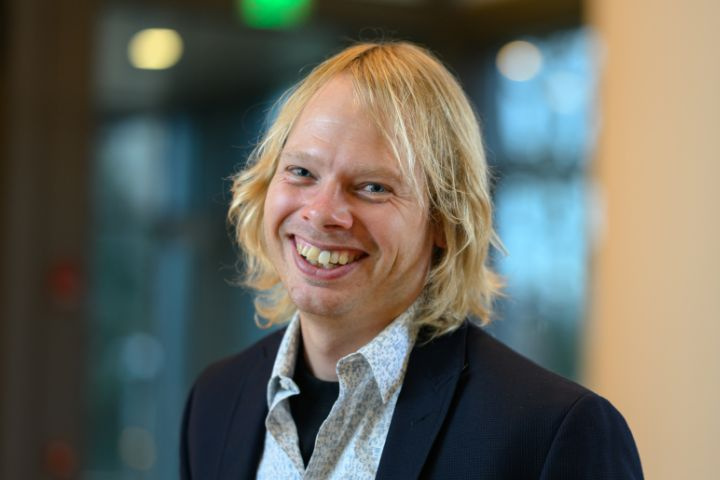Mining Fatwas for signs of extremism

Assistant Professor Richard Nielsen
Image: Stuart Darsch
Richard Nielsen had just started his second week of college when, on September 11, 2001, the world changed. He, too, changed, turning away from a path bent on math and science towards a career focused almost precisely on the motivations behind that day’s attacks.
Nielsen, now assistant professor of political science at MIT, never lost touch with his initial quantitative leanings, however. Today, his work employs a unique blend of statistical methods, internet data mining, and textual analysis of Arabic to measure the political leanings of Islamic clerics and tease out what it is that makes some clerics support militant jihad.
Nielsen himself comes from a devoutly religious background and followed family tradition by attending Brigham Young University, a Mormon university. “9-11 hit close to home,” he says. “I ended up with a need to understand when and why religion motivates people to violence.”
As an undergraduate, Nielsen began studying Arabic. He got interested in political science by working as a research assistant for a professor who was looking at data on the distribution of foreign aid from Western nations to the developing world. “I got drawn into taking a scientific approach to social sciences,” says Nielsen, who found that an interruption in foreign aid doubles the likelihood of conflict in a developing nation.
In graduate school at Harvard University, Nielsen turned his attention to the Middle East. The traditional approach to studying Middle East politics involves qualitative and ethnographic research. Because of political, cultural and language barriers, says Nielsen, “people have this idea that there’s not much quantitative data to be had on the Middle East.”
But instead of following tradition, Nielsen started poking around on Islamic websites and reading Fatwas, religious pronouncements written by Islamic clerics and tantamount to law in Islam. He found hundreds of thousands of Fatwas online. “The conception that there’s no data from the Middle East is wrong,” he says. “You just need to know where to look.”
Nielsen, however, wasn’t sure how to go about analyzing these texts. So he took a year off from his studies of government and headed to Harvard’s Statistics department, where he learned how to analyze text statistically. He also learned how to make inferences about cause and effect in the absence of experimental data.
With these tools in hand, Nielsen was able to compare the writings of Islamic clerics to writings by known al Qaeda clerics and measure their levels of extremism. “The similarities can be estimated statistically, and that becomes the thing I’m trying to explain,” says Nielsen. “Why do some clerics support militant jihad and others don’t?”
Through ethnographic fieldwork in mosques in Cairo, Egypt, Nielsen had learned how clerics shape their careers. Much like Western scholars, they have academic curricula vitae and advance with the help of advisors and academic networks. Nielsen found that well-networked clerics typically go on to get academic jobs — just 1 or 2 of 100 become extremist — but those with the weakest networks have about a 50% chance of crossing over to extremism.
Now at MIT, Nielsen is interested in collaborations with researchers in the Media Lab who are looking at the Arabic Twitter sphere and with potential collaborators in the Computer Science Artificial Intelligence Laboratory (CSAIL). “MIT seems like a fantastic place to do research that addresses big questions in new ways with a lot of diverse resources from multiple fields outside of political science,” he says.
His current focus is on the legacies of jihadist clerics who are targeted by drone strikes. Nielsen is examining whether or not they become martyrs, their ideas solidified in the minds of followers. “I’m taking religious ideas about violence seriously,” he says. “A few sharp and gripping ideas in the minds of a small number of individuals can change the course of history.”